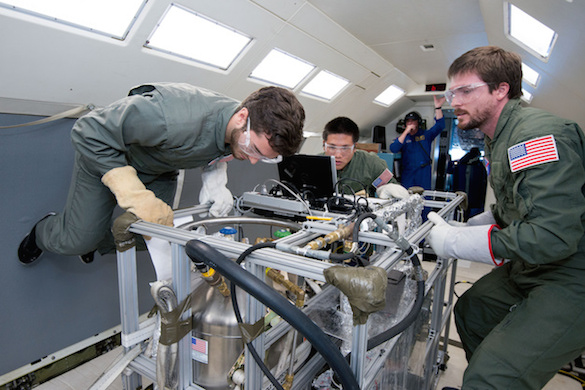Demonstration of Optimal Chilldown Methods for Cryogenic Propellant Tanks in Reduced Gravity
PI: Jacob Chung, University of Florida - Gainesville
PI: Jacob Chung, University of Florida - Gainesville

- TA02 In-Space Propulsion Technologies
- TA14 Thermal Management Systems
In-Space Tank-to-Tank Transfer is composed of three operational elements 1) high efficiency line chilldown, 2) high efficiency tank chilldown, and 3) no-vent fill of the receiver tank. When transferring cryogen from a supply tank to a receiver tank, the transfer line (i.e. pipe and valves) and receiver tank are at high temperatures compared to that of the liquid propellant. Chilldown is the process of introducing the cryogen into the system to cool the hardware down to the liquid temperature. The flowing propellant boils off as it cools the line and tank. Since the propellant is only storable and useful to the engine in pure liquid form, this vaporized propellant is vented overboard and considered lost. Since each of the three elements is a two-phase flow process, they are all highly influenced by the gravity level.
Technology Details
-
Selection DateREDDI-F1-17A (Nov 2017)
-
Program StatusActive
- 1 Parabolic
Development Team
-
PIJacob Chung
-
Organization
-
SponsorNASA

